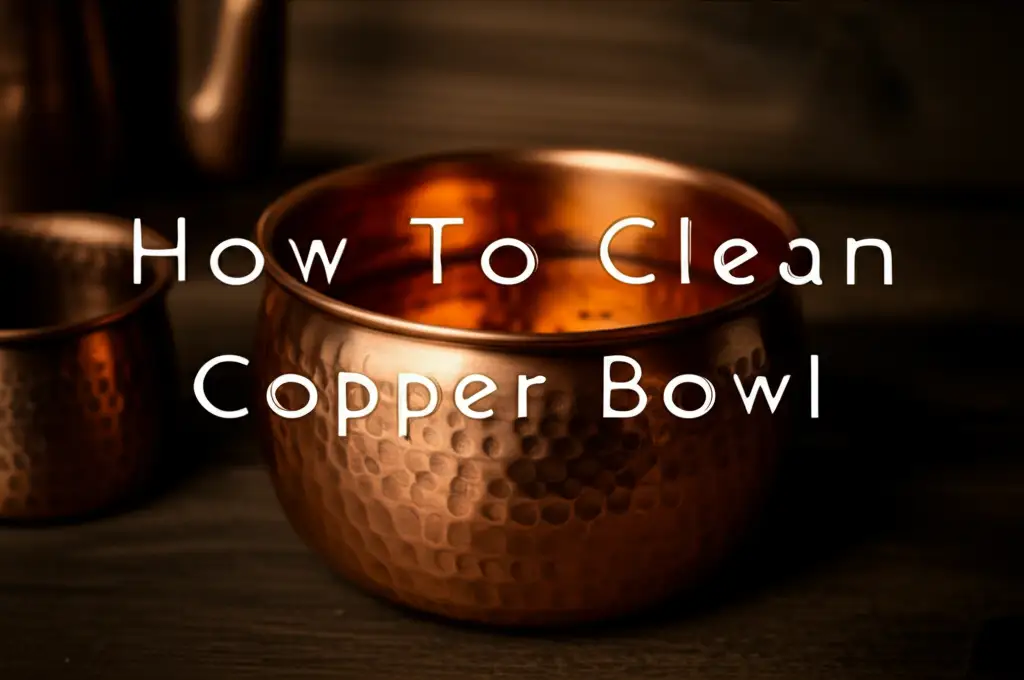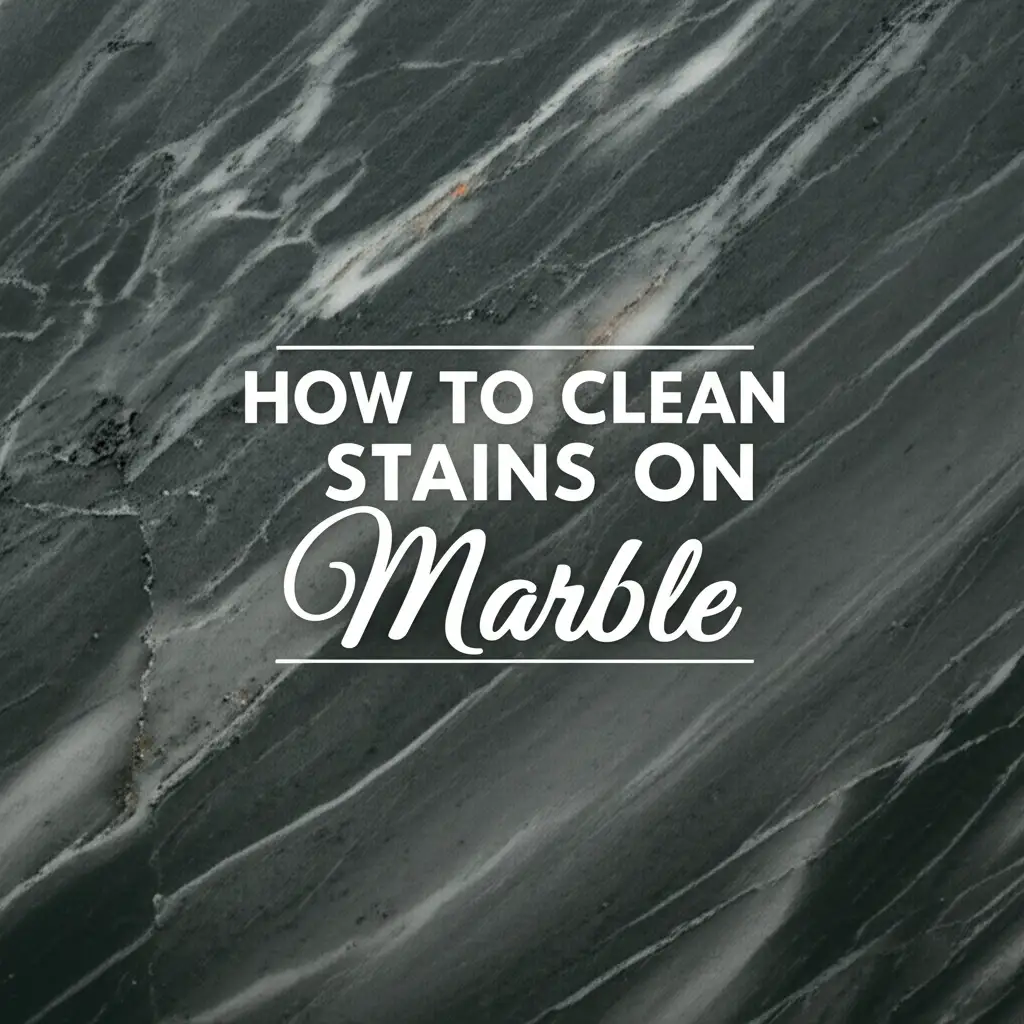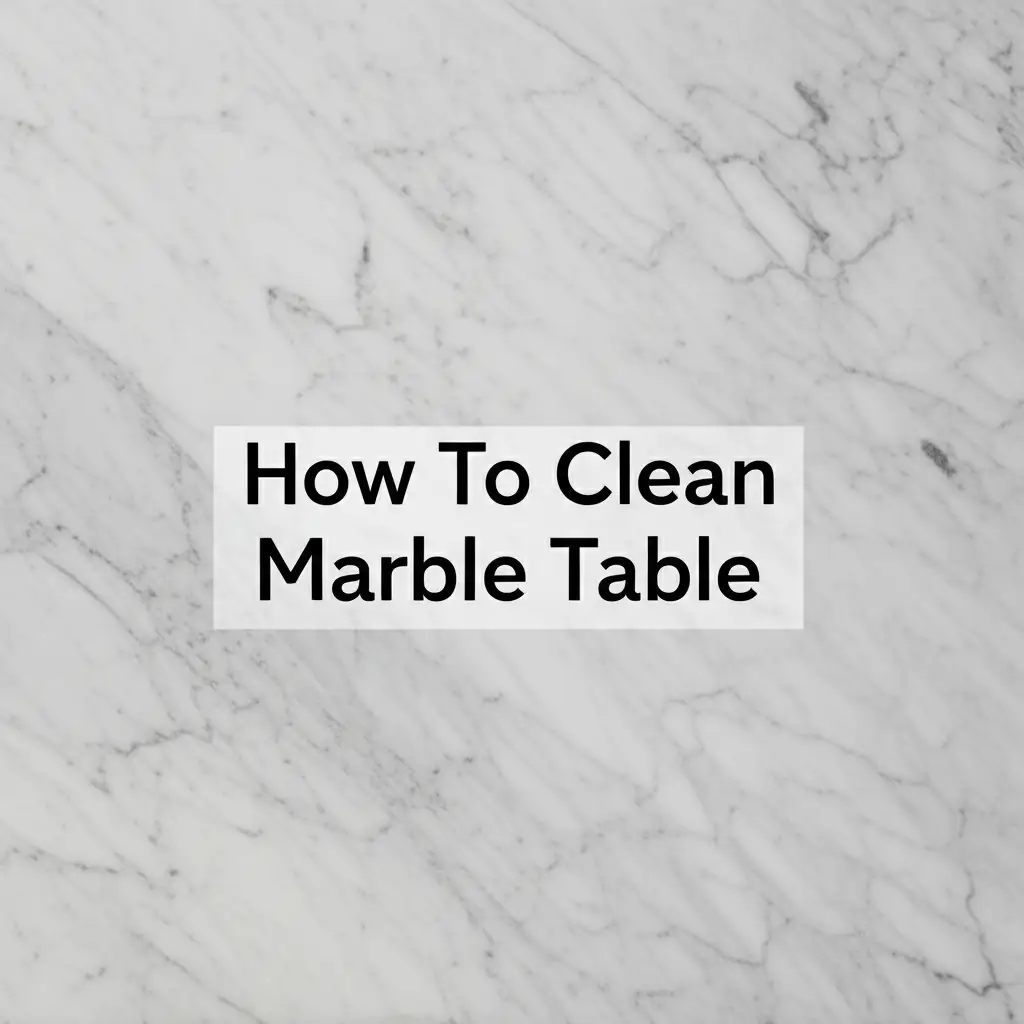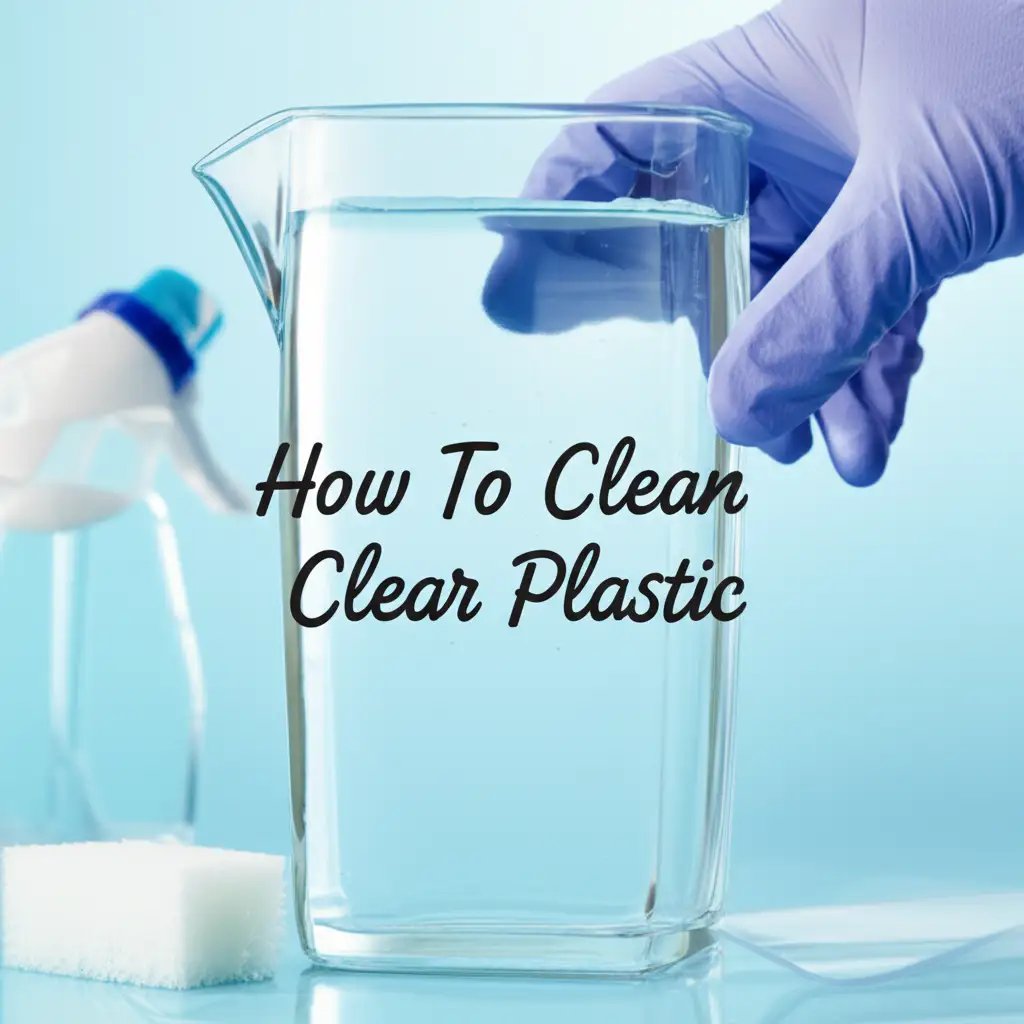· Home Care · 17 min read
How To Clean Copper Bowl

Revive Your Copper Bowl: A Guide to Effortless Cleaning
A copper bowl brings warmth and beauty to any home. Its reddish-brown glow adds character to kitchens and living spaces. However, over time, copper naturally changes. It develops a dull, dark layer called tarnish. This tarnish takes away the bowl’s lovely shine. Knowing how to clean copper bowl items properly keeps them looking new.
Cleaning your copper bowl is not difficult. You can use simple items from your pantry or special cleaners. My goal is to show you easy ways to bring back the shine. We will explore different methods. I will also explain how to keep your copper bowl clean for a long time. This guide helps you maintain the beauty of your copper piece.
Takeaway:
- Use acidic household items like lemon, salt, or vinegar for natural tarnish removal.
- Apply gentle pressure when cleaning to avoid scratches.
- Rinse and dry copper bowls immediately after cleaning to prevent water spots and re-tarnishing.
- Consider a protective wax or lacquer for long-term shine.
Cleaning a copper bowl involves using acidic agents like lemon juice and salt or vinegar to dissolve tarnish, followed by a thorough rinse and immediate drying. This process removes discoloration and restores the metal’s natural luster. Regular maintenance helps keep the bowl sparkling.
Understanding Copper Tarnish: Why Your Bowl Changes Color
Copper bowls are beautiful, but they do not stay shiny forever. Over time, a copper bowl develops a dark, dull layer. This layer is called tarnish. Tarnish forms when copper reacts with air and moisture. It is a natural process called oxidation. The copper surface combines with oxygen and other elements.
This chemical reaction creates a new layer on the copper. This layer can look brown, black, or even green. Many people call the green color “patina.” While some people like the aged look of a patina, tarnish often makes a bowl appear dirty. It hides the copper’s true, bright color. Knowing about this process helps us understand why cleaning is important.
Various factors speed up tarnish formation. High humidity is one major factor. Keeping copper near cooking fumes or certain foods also adds to tarnish. Food acids and oils can react with copper too. This leaves marks and speeds up discoloration. Even fingerprints can leave oils that react with the copper.
Cleaning copper removes this tarnish layer. It brings back the original shine of the metal. Cleaning also helps keep the copper in good condition. If tarnish builds up too much, it becomes harder to remove. Regular cleaning keeps your copper bowl beautiful and bright. It makes the cleaning process much easier each time. You can learn more about general copper care at How to Clean Copper and Brass. This helps understand similar issues with other copper items.
Natural Cleaning Methods for Copper Bowls: Pantry Power
Many effective ways to clean a copper bowl use simple items from your kitchen. These natural methods are safe and gentle for your bowl. They use common acids to break down the tarnish. You likely have these items at home already. These methods avoid harsh chemicals and are budget-friendly.
Lemon and Salt Method
This method is a classic for cleaning copper. Lemon juice is acidic, and salt acts as a gentle abrasive. Together, they form a powerful cleaning paste. I find this method works very well for light to medium tarnish. It is easy to use and provides good results.
Steps for lemon and salt:
- Cut a lemon in half.
- Sprinkle salt generously onto the cut surface of the lemon. You can also mix lemon juice with salt to form a paste.
- Rub the salted lemon directly onto your copper bowl. You can also use a soft cloth or sponge with the paste.
- Apply light pressure and rub in small circles. You will see the tarnish start to disappear.
- Continue rubbing until the tarnish is gone.
- Rinse the bowl thoroughly with warm water. Make sure to remove all lemon and salt residue.
- Dry the bowl immediately and completely with a soft cloth. This prevents water spots and new tarnish.
Vinegar and Salt Solution
Vinegar is another strong acid found in most kitchens. White vinegar works best for cleaning copper. When mixed with salt, it creates a powerful cleaning agent. This solution is great for larger copper items or deeper tarnish. You can use it by applying it or by soaking.
Steps for vinegar and salt:
- Mix equal parts white vinegar and salt in a bowl. You can adjust the ratio to make a thicker paste if needed.
- For a cleaning paste, add a little flour to thicken it. This helps it stick to the copper surface.
- Apply the mixture to your copper bowl using a soft cloth or sponge.
- Let the mixture sit on the tarnish for a few minutes. For heavy tarnish, let it sit longer, up to 15-30 minutes.
- Gently rub the bowl to remove the loosened tarnish.
- Rinse the bowl completely with warm water.
- Dry the bowl at once with a clean, soft towel.
The Ketchup Trick
Yes, ketchup can clean copper! Ketchup contains vinegar and mild acids. These acids work to dissolve tarnish. This method is surprising but effective for light tarnish. It is very easy to apply and less messy than other pastes. This trick is great for quick touch-ups.
Steps for ketchup:
- Squeeze a generous amount of ketchup onto your copper bowl.
- Spread the ketchup evenly over the tarnished areas.
- Let the ketchup sit on the copper for 10-15 minutes. For deeper tarnish, leave it longer, up to an hour.
- Rub the ketchup with a soft cloth or sponge. You will see the tarnish lift away.
- Rinse the bowl thoroughly with warm water to remove all ketchup.
- Dry the bowl immediately and completely.
This method is so simple and effective, it is worth a try. You can find more details about this specific method at How to Clean Copper with Ketchup. For larger copper items, like sinks, these natural methods are also often quite effective. You can find more cleaning ideas for similar items by checking out How to Clean Copper Sink.
Commercial Copper Cleaners: When to Use Them
Sometimes, natural cleaning methods are not enough. If your copper bowl has very heavy tarnish, or if you want a quicker solution, commercial copper cleaners are an option. These products are specially made to clean and polish copper. They contain chemicals designed to remove tarnish efficiently. I use these when I need a deeper clean or have limited time.
Commercial cleaners come in various forms. You can find them as liquids, creams, or pastes. Each type has its own way of application. Always read the instructions on the product label. Following directions ensures safe and effective use. Using too much or too little might not give the best results.
One benefit of commercial cleaners is their speed. They often work faster than natural methods. They can cut through thick layers of tarnish quickly. Many commercial cleaners also leave a protective layer on the copper. This layer helps prevent new tarnish from forming too fast. This means your copper bowl stays shiny longer.
However, commercial cleaners also have some downsides. They often contain strong chemicals. It is important to use them in a well-ventilated area. Always wear gloves to protect your skin. Keep them away from children and pets. They can also be more expensive than homemade solutions.
To use a commercial cleaner:
- Make sure you are in a well-ventilated space.
- Put on rubber gloves to protect your hands.
- Apply a small amount of the cleaner to a soft cloth or sponge.
- Rub the cleaner onto the copper bowl in small, circular motions.
- You will see the tarnish dissolve quickly.
- Rinse the bowl very thoroughly with warm water. Ensure no cleaner residue remains.
- Dry the bowl immediately with a soft, clean towel. Do not let water sit on the surface.
Choose a commercial cleaner based on your specific needs. If you want a quick fix for heavily tarnished items, they are a good choice. If you prefer natural and gentle methods, stick with pantry items first. Both options can make your copper bowl shine.
Cleaning Stubborn Stains and Burnt Marks on Copper
Sometimes, a copper bowl gets more than just tarnish. It can develop stubborn stains or burnt marks. These are harder to remove than regular tarnish. They often need a more focused approach. If your copper bowl was used for cooking, it might have tough residue. I have dealt with these many times, and it takes patience.
Deep tarnish can build up over many years. It looks very dark and might even have a green hue. Standard cleaning methods might not be enough for this. You might need a stronger natural paste. Consider using a slightly more abrasive material like a finer-grade steel wool or specialized copper scrubber. However, use these with extreme caution. Too much pressure or a coarse scrubber can scratch the copper.
For deep tarnish:
- Make a thick paste using lemon juice and baking soda. The fizzing reaction helps lift the grime.
- Apply the paste to the heavily tarnished areas.
- Let it sit for 30 minutes to an hour.
- Gently scrub with a non-abrasive sponge or cloth. For very tough spots, a nylon scrubber might be needed.
- Rinse well and dry immediately.
Burnt-on residue is common if a copper bowl was heated. Food can stick and burn, leaving dark, crusty marks. Do not try to scrape these off with sharp tools. This will damage the copper surface. Instead, soften the burnt bits first.
To remove burnt-on residue:
- Fill the bowl with warm water and a few drops of dish soap.
- Let it soak for several hours, or even overnight. This softens the burnt food.
- After soaking, gently try to scrape off the softened residue with a wooden or plastic utensil.
- If marks remain, make a paste of baking soda and a little water.
- Apply the paste to the burnt area.
- Gently rub with a non-abrasive sponge or cloth. The baking soda acts as a mild abrasive.
- For very stubborn burnt marks, you may need a commercial copper cleaner designed for this purpose. Follow product instructions carefully.
Cleaning burnt copper can be challenging. For more detailed instructions on burnt copper, you can refer to How to Clean Burnt Copper Pan. Similarly, copper bottom pans can present unique cleaning challenges, and insights from How to Clean Copper Bottom Pans might also prove useful for general tough spot cleaning. Always rinse and dry your copper bowl immediately after cleaning any stubborn stains. This prevents water spots and ensures the effort was worthwhile.
Polishing and Protecting Your Clean Copper Bowl
Once you clean your copper bowl and remove the tarnish, it needs polishing. Polishing brings out the true luster and shine. It makes your copper bowl look its best. After all the effort of cleaning, this step makes a big difference. I love seeing the mirror-like shine after a good polish.
You can use a soft, dry cloth for basic polishing. Microfiber cloths work very well. Simply rub the clean, dry copper surface in small, circular motions. This buffs the copper and enhances its natural shine. For a more intense shine, you can use a small amount of specialized copper polish. Apply it with a soft cloth and buff it off according to the product’s instructions.
Protecting your copper bowl is just as important as cleaning it. Copper tarnishes naturally over time. Protecting it slows down this process. This means your bowl stays shiny for longer. It also reduces how often you need to clean it. There are several ways to protect copper.
One common protection method is waxing. After cleaning and polishing, apply a thin layer of car wax or a special metal wax.
Steps for waxing:
- Ensure the copper bowl is completely clean and dry.
- Apply a very thin, even coat of wax using a soft cloth.
- Let the wax dry to a haze, as per product instructions.
- Buff the bowl vigorously with a clean, soft cloth until it shines.
Wax creates a barrier against air and moisture. This slows down oxidation. You will need to reapply wax occasionally. How often depends on how much you use the bowl and where it is kept.
Another protection option is lacquering. This is a more permanent solution. Lacquer is a clear coating that seals the copper. It completely stops tarnish. However, lacquering is often done by professionals. If the lacquer chips or scratches, it needs to be reapplied. For decorative bowls that are not used for food, this can be a good choice. For food-use bowls, avoid lacquering the inside.
Proper storage also helps protect copper. Store your copper bowl in a dry place. Avoid high humidity. You can wrap it in a soft cloth or a special anti-tarnish bag. This keeps it away from air exposure. By polishing and protecting, you maintain the beauty of your copper bowl with less frequent deep cleaning.
Common Mistakes to Avoid When Cleaning Copper Bowls
Cleaning copper bowls is straightforward, but people make common mistakes. Avoiding these errors ensures you clean your bowl safely and effectively. It also protects the copper from damage. I have seen many copper items ruined by improper cleaning. My goal is to help you keep your copper bowl safe.
One major mistake is using abrasive scrubbers. Steel wool, harsh scouring pads, or even stiff brushes can scratch copper. Copper is a relatively soft metal. Scratches dull the surface and can make it harder to clean in the future. They also ruin the smooth look of the bowl. Always use soft cloths, sponges, or cotton balls. If you need a bit of abrasion, use fine salt with lemon, or baking soda, which is much gentler.
Another big mistake is putting copper bowls in the dishwasher. Dishwashers use harsh detergents and very hot water. These chemicals and high temperatures can strip away the copper’s finish. They can cause uneven discoloration or permanent damage. The rapid drying cycles can also create water spots. Always hand wash your copper bowls. This preserves their beauty and extends their life.
Ignoring tarnish for too long is another common error. The longer tarnish sits on copper, the harder it is to remove. Heavy tarnish often requires stronger methods. This can mean more effort or even using harsher cleaners. Regular, light cleaning is much easier than a big restoration project. A quick wipe down after each use can make a big difference.
Improper drying is a frequently overlooked step. After cleaning and rinsing, many people let copper air dry. This is a mistake. Air drying leaves water spots. These spots are mineral deposits from the water. They can look like new tarnish or dull spots. Always dry your copper bowl immediately and completely with a soft, clean towel. Buffing it dry also helps bring out the shine.
Using wrong cleaning agents can also cause damage. Avoid ammonia-based cleaners, bleach, or harsh acidic cleaners not meant for copper. These can react negatively with the metal. They can cause permanent staining or pitting. Stick to methods specifically recommended for copper.
By avoiding these common mistakes, you ensure your copper bowl stays beautiful. Proper care extends the life of your cherished piece. Simple steps prevent big problems down the road.
Everyday Care and Maintenance for Long-Lasting Shine
Maintaining your copper bowl’s shine does not end with a deep clean. Regular, everyday care keeps it looking its best. This routine maintenance prevents heavy tarnish from building up again. It saves you time and effort in the long run. I follow these steps myself to keep my copper items sparkling.
The most important step is prompt cleaning after use. If your copper bowl holds food, wash it soon after. Food acids and oils can react with copper. This creates spots and speeds up tarnish. A quick rinse and wipe down prevent this. Use warm, soapy water and a soft sponge. Dish soap is fine for general cleaning, but avoid harsh detergents.
Always dry your copper bowl immediately. I cannot stress this enough. Water left on copper will evaporate and leave mineral deposits. These look like spots or rings. They can be hard to remove if left for too long. Use a soft, clean towel to dry the bowl thoroughly. Buffing it dry adds extra shine.
Consider where you store your copper bowl. High humidity areas speed up tarnish. Keep your copper bowl in a dry place. If you do not use it often, store it in a cabinet. You can even wrap it in a soft cloth or a special anti-tarnish bag. These bags are designed to block air exposure. This helps prevent tarnish from forming.
For decorative copper bowls, a simple dusting is often enough. Use a soft cloth to wipe away dust and fingerprints. Fingerprints contain oils that can leave marks on copper. Regular dusting keeps the surface clean and shiny. If you touch it, give it a quick wipe.
How often you need a deep clean depends on several factors. If you use your copper bowl daily for food, you might need a deep clean every few weeks. If it is mostly decorative, once every few months or even once a year might be enough. Keep an eye on its appearance. When you see signs of dullness or tarnish, it is time for a proper cleaning.
By incorporating these simple habits into your routine, your copper bowl will maintain its beautiful shine. You will spend less time on intense cleaning. Your copper bowl will remain a lovely addition to your home for many years.
FAQ Section
How often should I clean my copper bowl?
Clean your copper bowl as needed, based on its use and appearance. If used for food, clean after each use with soap and water, drying immediately. For decorative bowls, deep clean every few months or when tarnish becomes noticeable. Regular gentle wiping prevents heavy buildup.
Can I put my copper bowl in the dishwasher?
No, never put a copper bowl in the dishwasher. The harsh detergents, high heat, and intense water jets can cause irreversible damage. This includes uneven discoloration, pitting, and stripping the protective finish. Always hand wash copper bowls gently.
Is the green tarnish on copper harmful?
The green tarnish, called verdigris or patina, is copper carbonate. It is generally not considered harmful for decorative items. However, if using the bowl for food, it is best to clean it thoroughly. Food-grade copper items are usually lined to prevent direct contact with copper.
What is a natural way to shine copper without chemicals?
To shine copper naturally, use a mixture of lemon juice and salt. Rub this paste onto the copper, rinse thoroughly, and then dry and buff with a soft cloth. Alternatively, a paste of white vinegar and salt or even ketchup can effectively remove tarnish and restore shine.
Can I use steel wool on copper?
No, you should not use steel wool on copper. Copper is a soft metal, and steel wool will scratch its surface, leaving permanent marks and dulling its shine. Always use soft cloths, sponges, or cotton balls for cleaning. For stubborn spots, use gentle abrasives like baking soda.
How to prevent copper bowls from tarnishing quickly?
To prevent quick tarnishing, always dry your copper bowl immediately after washing. Store it in a dry environment, away from humidity and cooking fumes. For long-term storage, wrap it in a soft cloth or an anti-tarnish bag. Applying a thin coat of wax can also provide a protective barrier.
Conclusion
Keeping your copper bowl clean and shiny does not have to be a chore. We have explored various effective methods. You learned how to use common household items like lemon, salt, vinegar, and even ketchup. We also discussed when to use commercial cleaners for stubborn tarnish. Understanding how to clean copper bowl items properly protects your investment.
Remember, prompt drying and proper storage are key to long-lasting shine. Avoid common mistakes like using abrasive scrubbers or the dishwasher. By following these simple steps, your beautiful copper bowl will maintain its luster for years to come. Do not let tarnish hide its natural beauty. Take action today to restore and preserve your copper bowl’s radiant glow. Your cherished piece will thank you with its enduring elegance.
- copper cleaning
- tarnish removal
- metal care
- kitchen maintenance
- natural cleaning




